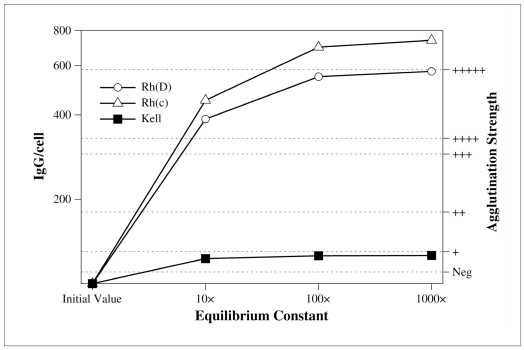Figure 1.
Effect of increasing the equilibrium constant on three representative red cell antibodies. The y-axis on the left shows the number of IgG per red cell. The y-axis on the right is the agglutination strength corresponding to the number of IgG/cell (the correlation is based on a study by Merry et al.56 and must be intended as a gross approximation; it is shown for illustrative purposes only). Anti-D, -c, and – K are supposed to have an equilibrium constant of 2′108, 4.4′107, and 1.5′1010, respectively (typical values, see Table III) and a concentration below the minimum detectable in the antiglobulin test. If the equilibrium constant is increased 10 to 1,000 times, anti-D and anti-c are greatly enhanced but anti-K is not. The reason is that, in the initial conditions, anti-D and anti-c only have 17 and 13%, respectively, of the antibody molecules bound to the red cells, while anti-K already has 79%. Therefore, in the latter case, increasing the equilibrium constant 1,000-fold results in a mere 20% increment in antibody uptake, too small to be appreciated in the antiglobulin test.

